#CoreEHS
Explore tagged Tumblr posts
Text
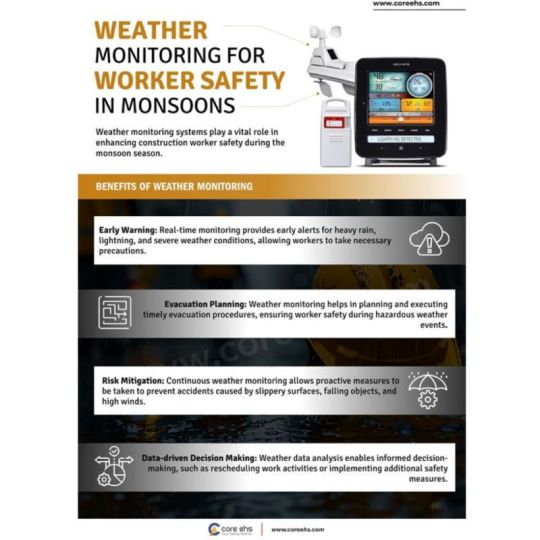
How prepared is your worksite for unpredictable monsoon weather? From slippery surfaces to sudden storms, the weather can change everything on a job site. That’s why real-time weather monitoring isn’t just a “nice-to-have” but a critical layer of protection for your workforce. ✅ Early warnings ✅ Safer evacuation planning ✅ Risk mitigation ✅ Smarter decisions Let’s not wait for accidents to happen, let’s get ahead of them. Is your site weather-ready?
#WeatherSafety#MonsoonReadiness#ConstructionSafety#COREEHS#WorkplaceSafety#EHS#RealTimeMonitoring#SafetyFirst
0 notes
Text
Amor é scracho no meu linguajar meu bem! Não Scracho da banda, apesar daquela banda der muito boa. Eu amo de maneira "escrachada" mesmo. Declarando meu amor, mimando, e estando ali. De corpo, alma e coreeh.
E tem mais, não é porque amo que quero 24h de um dia inteiro ficar ao lado ou saber o que você está fazendo sabe?
Meu amor é dual. Ao mesmo tempo que amo quero que meus amores tenham vidas e depois dividam comigo as coisas maravilhosas que fizeram de suas vidas singulares. Meu amor é louco, é solto, é leve e sincero. Pode crer que se eu disser que te amo você pode contar comigo pra tudo, meus amigos sabem bem disso. O meu amor é escrachado. Amo meu amor e minha forma de amar.
Sei lá como diabos eu amo tanto...
@afragmentada
3 notes
·
View notes
Text
Are spreadsheets still your go-to for Job Hazard Analysis? They may seem convenient, but they weren’t designed for real-time risk management. Manual tracking, scattered updates, version confusion. These aren't just workflow issues, they’re safety blind spots. JHA is meant to prevent incidents, not create more administrative effort. As work environments evolve, so should our tools. Digital platforms offer smarter, faster, and more accountable ways to assess and act on risk. Because identifying hazards should never be buried in a spreadsheet cell. How are you managing JHA in your organization? Still using sheets, or have you made the switch?
youtube
#JobHazardAnalysis#WorkplaceSafety hashtag#EHS#COREEHS#SafetyInnovation#DigitalSafety#HazardManagement#SafetyCulture#ZeroHarm#StopUsingSpreadsheets#Youtube
0 notes
Text
Think arc flashes are rare? Think again. They can happen in a split second and change a life forever. Burns, blasts, or worse… and most of it is preventable. Our latest reel breaks down the basics of arc flash awareness. What it is, why it happens, and how to stay protected with the right knowledge and PPE. You don’t need to be an expert to understand the danger. You just need to care enough to be aware. Have you ever witnessed or experienced an arc flash incident, or a near miss? What did you learn from it?
#ArcFlashAwareness#ElectricalSafety#COREEHS#PPEMatters#WorkplaceSafety#EHSReels#SafetyFirst#ZeroHarm#HighVoltageHazards
0 notes
Text
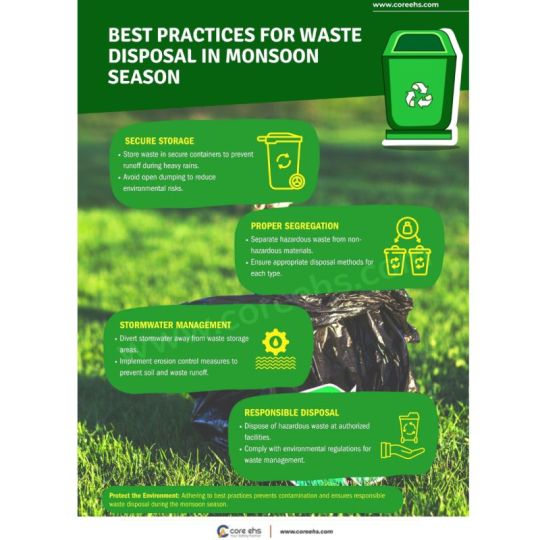
Waste doesn't stop for the rain. But if we do, the consequences pile up fast. Monsoon season brings more than water. It brings overflowing bins, blocked drains, leachate runoff, and serious health risks if waste isn't managed right. Our latest infographic breaks down simple yet effective steps to ensure safe, hygienic, and compliant waste disposal during the rains. Because the smallest lapse can trigger the biggest mess. Disposal isn't just about getting rid of waste. It's about knowing where it ends up when the skies open. Take a look, stay informed, and keep your site monsoon-ready.
#MonsoonWasteManagement#EHS#WasteDisposal#COREEHS#EnvironmentalSafety#RainReadySites#ZeroWaste#WorkplaceSafety#SustainabilityMatters#SafetyInfographic
0 notes
Text
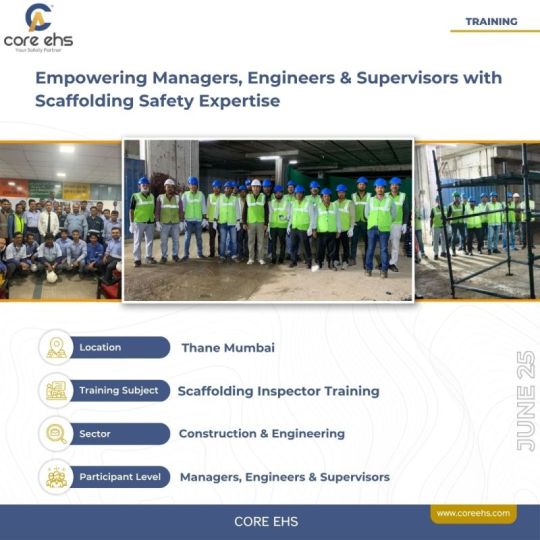
What makes a scaffold truly safe? It’s not just the structure it’s the scrutiny. CORE EHS recently conducted a Scaffolding Inspector Training session in Thane, Mumbai, focused on empowering managers, engineers, and supervisors with the knowledge to assess, evaluate, and ensure scaffolding safety at every stage. With construction activity growing rapidly, inspections can't be a formality they must be a frontline defense. Let’s not wait for incidents to remind us why inspection matters. Let’s build it into the culture.https://coreehs.com/ehs-trainings/
#coreehs#ScaffoldingSafety#WorkAtHeight#EHSLeadership#ConstructionSafety#TrainingForChange#ThaneSafety#InspectorTraining#BuildSafeWorkSafe
0 notes
Text
Ever looked at a small room or tank and thought, “It’s just a quick job! What could go wrong?” That’s the trap. In confined spaces, danger doesn’t always look dangerous. In this reel, we’re breaking down the top hazards you can’t afford to ignore: – Toxic gases you can’t see or smell – Low oxygen levels that sneak up fast – Flammable vapors waiting for a spark – Sudden energy releases – Tight exits Confined spaces aren’t risky because they’re small. They’re risky because they’re hazards are often underestimated. What’s one safety check you never skip before entering a confined space? Drop it in the comments, someone might need that reminder today.
youtube
#ConfinedSpaceSafety#StayAlert#SafetyInSmallSpaces#COREEHS#IndustrialSafety#ZeroCompromise#WorkplaceAwareness#SafetyFirstAlways#Youtube
1 note
·
View note
Text
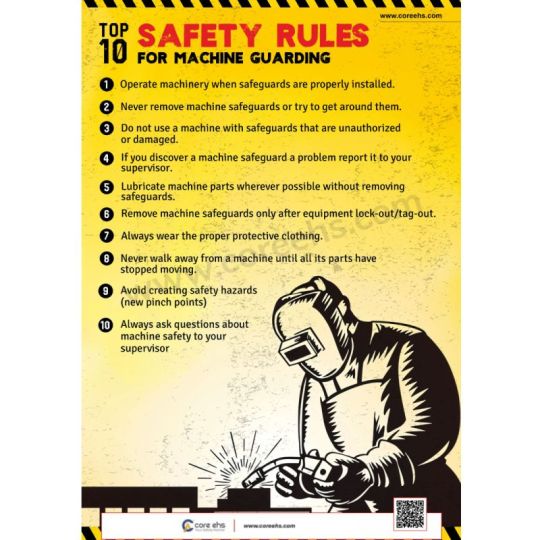
Are your machines truly safe to operate? Let’s make sure. Machine-related injuries don’t always happen because of complex failures, many stem from overlooked basics. That's why machine guarding isn't just a compliance checkbox, it's your first line of defense. We've broken down the Top 10 Machine Guarding Rules every worker and supervisor must know. From proper placement to lockout protocols, these aren't just tips, they're safeguards for hands, limbs, and lives. Check out our infographic to reinforce awareness, prevent incidents, and build a culture where safe machines = safe teams. Got more suggestions to be safer on machines? Mention them in the comments below!!
#MachineGuarding#IndustrialSafety#EHS#WorkplaceSafety#InjuryPrevention#COREEHS#MachineSafety#SafetyCulture#Infographic#ZeroHarm
0 notes
Text

What makes a scaffold truly safe? It’s not just the structure it’s the scrutiny. CORE EHS recently conducted a Scaffolding Inspector Training session in Thane, Mumbai, focused on empowering managers, engineers, and supervisors with the knowledge to assess, evaluate, and ensure scaffolding safety at every stage. With construction activity growing rapidly, inspections can't be a formality they must be a frontline defense. Let’s not wait for incidents to remind us why inspection matters. Let’s build it into the culture.
#coreehs#ScaffoldingSafety#WorkAtHeight#EHSLeadership#ConstructionSafety#TrainingForChange#ThaneSafety#InspectorTraining#BuildSafeWorkSafe
0 notes
Text

Some of the most effective electrical safety practices are also the simplest. Yet, they’re often the first to be overlooked in fast-paced work environments. This infographic highlights easy-to-follow tips that can significantly reduce the risk of shocks, short circuits, and fire hazards—whether you’re on the shop floor, at a construction site, or even working from home. ✅ Use insulated tools ✅ Never overload circuits ✅ Keep water away from electrical setups ✅ Regularly check cords for wear and damage ✅ Know your emergency shutoffs Have any simple electrical safety tips of your own? Drop them in the comments. We’re always learning from the best.
#ElectricalSafety#WorkplaceSafety#SafetyTips#EHS#Infographic#COREEHS#SafeWorkPractices#HazardPrevention#SafetyCulture
0 notes
Text

Expertise, where elevation meets execution. We’ve deployed one of our certified Work at Height specialists at a critical thermal power construction zone supporting safe access and fall prevention strategies for a major Unit-3 expansion. When heights, hazards, and heavy infrastructure come together, experience isn't optional it’s essential. At CORE EHS, we place safety specialists where they’re needed most: right on the line between risk and responsibility.
0 notes
Text
Fixing the problem is good. Understanding why it happened is better. Too often, we stop at surface-level fixes—treating symptoms while the real cause keeps hiding below. That’s where Root Cause Analysis (RCA) steps in: not just to ask what happened, but to dig deeper and ask why… until the real answer is found. If you don’t get to the root, the problem will grow back. Watch the reel, rethink your approach to incidents, and take a step closer to true prevention.
#RootCauseAnalysis#WorkplaceSafety#IncidentPrevention#EHS#ContinuousImprovement#ThinkBeyondFixes#COREEHS#ZeroHarm
0 notes
Text
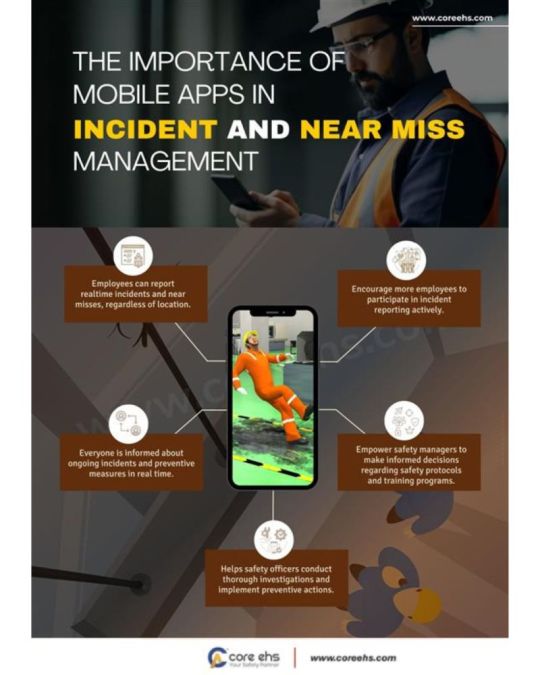
If reporting a near miss takes hours, will it ever be reported at all? In fast-paced, high-risk work environments, timing is everything—especially when it comes to safety. Mobile apps are transforming incident and near miss management by making reporting instant, accurate, and actionable. Our latest infographic highlights how mobile technology is: ✅ Simplifying real-time reporting ✅ Improving data accuracy and response times ✅ Empowering frontline workers to act ✅ Turning near misses into meaningful insights Because every near miss reported is a future incident prevented. Take a look at the infographic and imagine what safer could look like—with just a few taps.
#IncidentReporting#NearMissManagement#MobileSafetyApps#WorkplaceSafety#EHS#ZeroHarm#DigitalEHS#COREEHS
0 notes
Text
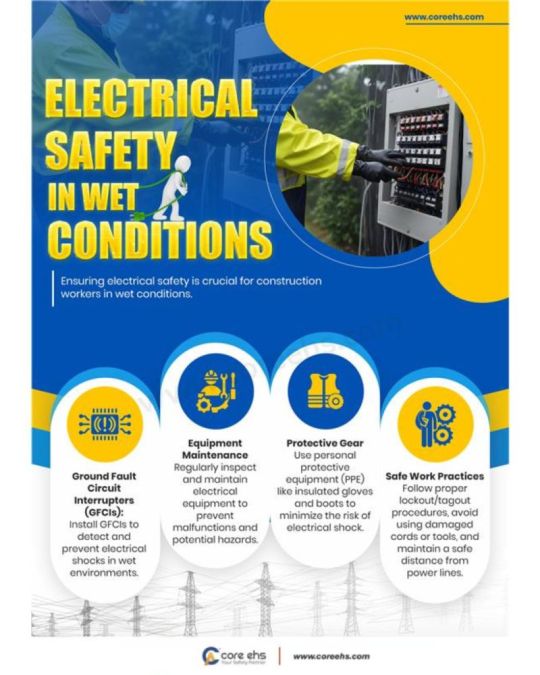
Water and electricity don’t mix. But when they do - the hazards are endless. Working in wet or damp conditions drastically increases the chances of electrical shock, equipment failure, and even fatal incidents. Yet, these environments are common on many worksites—and often underestimated. This infographic breaks down how to stay electrically safe in wet conditions, covering: ✅ Critical do’s and don’ts ✅ Proper PPE and insulated tools ✅ Importance of GFCIs (Ground Fault Circuit Interrupters) ✅ Safe work practices in rain, washdown areas, and humid zones Because when the ground is wet, every step should be a calculated one. Your safety depends on awareness—especially when the danger isn’t always visible. Take a moment to review the infographic and share it with your team. One informed choice can prevent a disaster.
#ElectricalSafety#WetConditions#WorkplaceSafety#EHS#ZeroHarm hashtag#ShockPrevention#SafetyAwareness#COREEHS
0 notes
Text

A Short Circuit Isn’t Just a Glitch—It’s a Warning. What starts as a minor spark can quickly escalate into a full-blown fire. Short circuits are one of the most common causes of electrical fires, yet often the least understood. Do you know what really causes a short circuit? How fast it can ignite a fire? Or that an electrical arc can reach temperatures hotter than the surface of the sun? Our latest infographic breaks it down— 🔹 What causes short circuits 🔹 How they escalate into fires 🔹 Practical, everyday prevention tips 🔹 The shocking reality of arc temperatures Understanding the risk is the first step to preventing it. Protect your home, your workplace, and your people—start by knowing the signs.
#shortcircuit#electricalsafety#fireprevention#arcflash#safetyawareness#CoreEHS#workplacesafety#staysafe
0 notes
Text

At CORE EHS, we are proud to support one of the most recognizable leaders in the paint and coatings industry as they expand their chemical plant operations. Our Professional Resourcing Division has deployed a dedicated team of safety officers to ensure the highest safety standards are met throughout this landmark project.
#DrivingSafety#SafetyFirst#ColourfulVision#EHS#WorkplaceSafety#ChemicalPlantSafety#SafetyStandards#SafetyCulture#SafetyLeadership#CoreEHS#SafetyInnovation#IndustrialSafety#PaintAndCoatings#ProjectSafety#safetyexcellence
0 notes